Top Tier CPU Air Coolers Q3 2015: 9-Way Roundup Review
by E. Fylladitakis on July 6, 2015 8:00 AM ESTThe Phanteks PH-TC14PE
Phanteks is another world-renowned CPU cooler manufacturer, whose high performance designs made them widely known very quickly. Aside from coolers and fans, the company is now active in the field of PC cases as well. For the means of this review, Phanteks supplied us with the PH-TC14PE, their largest and most popular CPU cooler. The PH-TC14PE actually is over two years old, making it the oldest design in this roundup review.
Phanteks supplies the PH-TC14PE in a large cardboard box with an abstract design showcasing the color variations of the cooler. Inside the box, the cooler is well protected within a polyethylene foam shell and the bundled items are secured in small boxes. Aside from the hardware necessary for the mounting of the cooler, Phanteks also provides a tube of quality thermal grease, six anti-vibration rubber strips for the fans, a fan power cable splitter, a fan speed reducer. They also provide six wire clips and twelve plastic fan clip adaptors, for the installation of up to three fans onto the cooler's body.
The PH-TC14PE is a very large symmetric dual tower cooler. The fronts of the fins form small circular notches, with the exception of the top fin that is straight and serves as a cover for the heatpipes as well. One of its prominent features is instantly apparent, which is the colored fins. There are five color variations of the PH-TC14PE and we received the black version. Phanteks calls this "Physical Antioxidant Thermal Shield" (or Physical Antioxidant Thermal Spraying - we found both in the company's texts) and claims that it enhances thermal performance by both increasing the dissipation rate of the heatsink itself and decreasing the radiation absorption rate from other heat sources. The fins are soldered on the heatpipes with another patented method that Phanteks calls "Cold Plasma Spraying Coating", which supposedly increases the heat transfer rate between the copper heatpipes and the aluminum fins.
Phanteks provides two of their own PH-F140 140 mm fans with the PH-TC14PE. The company loves abbreviations, so the PH-F140 have "Updraft Floating Balance (U.F.B)" bearings, "Maelstrom Vortex Booster (M.V.B)" blades and "Maelstrom Air-Fort Optimization (M.A.F.O)" drive systems. Other than the fancy names, no real technical data or schematics of these technologies can be found. All we are left with is their standard manufacturer specifications, which indicate a maximum speed rating of 1300 RPM (1200 RPM in PWM mode). The design of the wire clips allows the fans to be moved upwards by several centimeters, providing clearance to RAM modules and heatsinks that would otherwise be blocked, assuming that the case is wide enough of course.
The base of the PH-TC14PE is simplistic, virtually meant only to provide mechanical retention for the installation on a CPU. Five thick 8 mm heatpipes run through the base and to both fin arrays on either side. The copper bottom half of the base and the heatpipes are nickel-plated, with the contact surface polished fairly well but not down to a perfect mirror finish. Slight machine marks can be seen on the contact surface but there are no major imperfections to speak of.


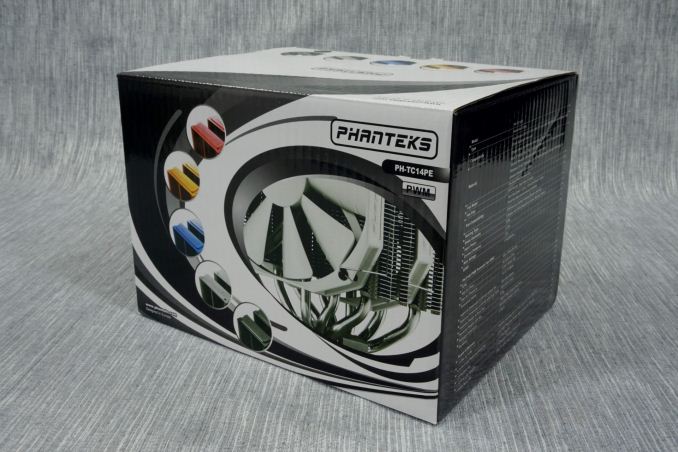
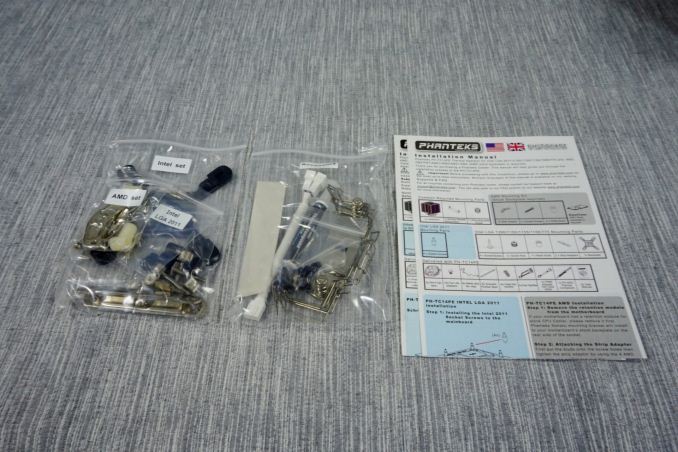
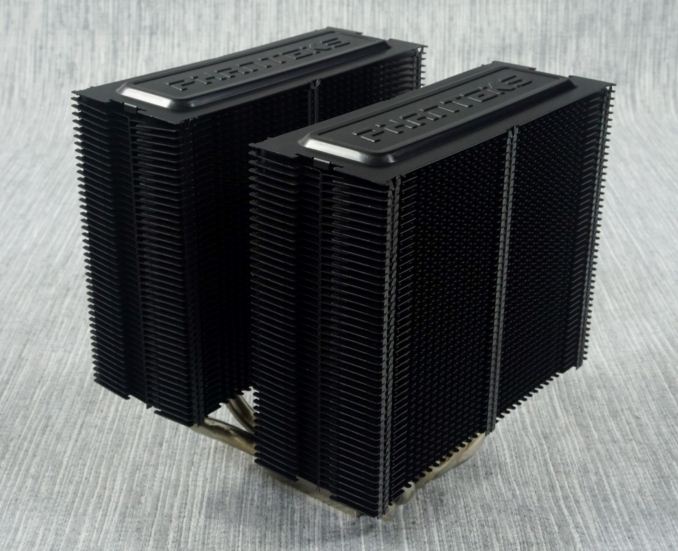
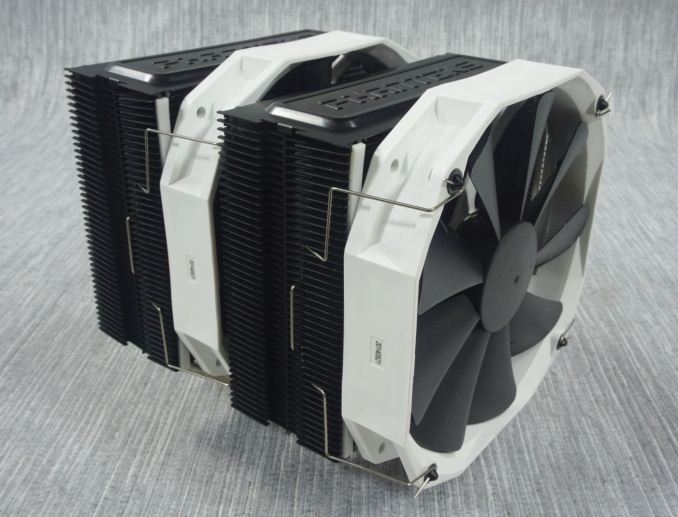
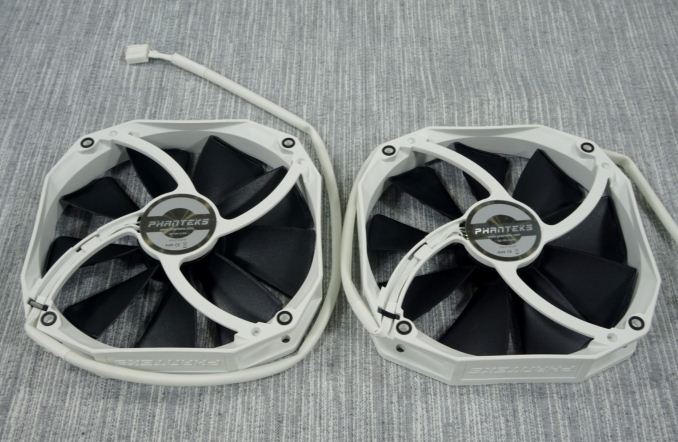
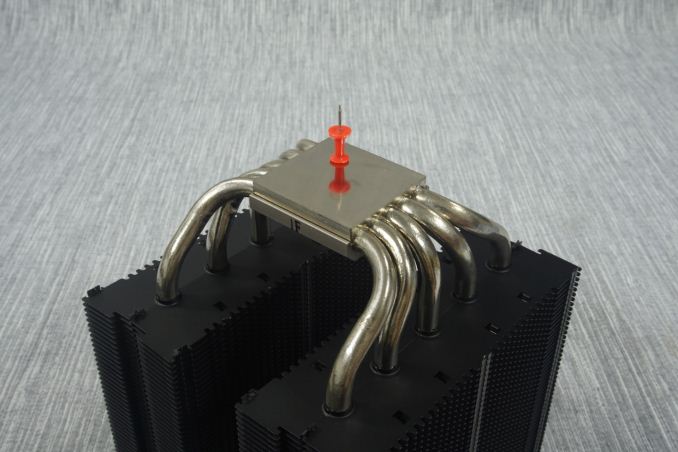








135 Comments
View All Comments
mr_tawan - Monday, July 6, 2015 - link
Used to have 212+ once. Later I swapped out for a cheap closed-loop. Though the CPU temp is a few C lower, the closed-loop was much louder than the 212+ (due the the 'pump whine').Years later I upgrade the rig to a Core i5, which is not really that hot, and I'm not interested in overclocking anymore (being more mature I guess).
I find the 212 is pretty good for its price. It's a great entry-level cooler for those who want to upgrade. I also think that it could serve well as a baseline for the comparision.
zodiacfml - Monday, July 6, 2015 - link
I didn't know that overclocking enthusiast would prefer a lower performing heatsink instead of the best available. The reason is simple; CPUs consume less power throughout the years even with continuous but non synthetic workloads including gaming.Many years ago, I was a fan of watercooling then big-air heatsinks then not anymore. It is just not logical anymore as they are more expensive, larger, and cumbersome.
kmmatney - Monday, July 6, 2015 - link
To me, the whole point of overclocking is to get a better cpu than what you paid for. So overpaying for a heat sink doesn't make sense - the whole point is to get the best possible performance, while spending the least amount of money. At least that is what overclocking means to me, and I'm sure a lot of other people as well.Ian Cutress - Monday, July 6, 2015 - link
That's usually how most people start with overclocking. For others, it's getting the best performance regardless. That's why people still that the i7-K and push it, rather than a Pentium-K and tweak it.kmmatney - Monday, July 6, 2015 - link
I bought my Hyper 212 for $19.99 - a much bigger savings than $10. It does the job, and in the end my overclock was not limited by temperature, but by the CPU itself. A more expensive heatsink wouldn't gain me anything.aj654987 - Wednesday, July 8, 2015 - link
What are you even talking about. The 212 is $35 and half the cost of many of these heatsinks. Its been the gold standard for years, if you only get another 1 C out of a HSF that cost double then its not worth it.CummingsSM - Thursday, July 9, 2015 - link
Yep. You save $9.99 and then this happens: https://i.imgur.com/COC5qW9.jpg(In case someone is wondering: No, I didn't over-torque it, the bolt got caught in the back-plate and sheared under the power of a screwdriver lightly applied; And yes, that bolt is hollow; And yes, that is the mounting hardware from a CM 212 EVO; And yes, I'm done buying CM products.)
LittleLeo - Thursday, July 9, 2015 - link
Or a Beer and a bag of chipstabascosauz - Monday, July 6, 2015 - link
Are you kidding me? Intel's CPUs might be efficient compared to AMD's, but there is hardly a valid reason to dismiss the dual-tower crowd. Intel's CPUs are hotter than they have been in years, thermal performance having declined steadily since Sandy Bridge due to sh*ttier and sh*ttier TIM and other reasons.rickon66 - Monday, July 6, 2015 - link
Regarding the CM 212+/EVO -They did not want to show a $25 cooler that beat the expensive guys.